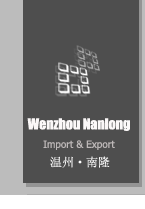|
|||
 |
|||
ASTM A193 A193M Alloy-Steel and Stainless Steel Bolting Materials for High-Temperature Service
This standard isissued under the fixed designation ASTMA 193/A 193M;the number immediately following the designation indicates the year of original adoption or, in the case of revision, the year of last revision.Anumber in parentheses indicates the year of last reapproval.A superscript epsilon (e) indicates an editorial change since the last revision or reapproval.This standard has been approved for use by agencies of the Department of Defense.
1. Scope*(ASTM A193 A193M B7)
1.1 This specification covers alloy and stainless steel bolting material for pressure vessels, valves, flanges, and fittingsforhigh-temperature service.The termbolting material asused in this specification covers bars,bolts,screws,studs,studbolts and wire. Bars and wire shall be hot-wrought. The materia may be further processed by centerless grinding or by cold drawing. Austenitic stainless steel may be carbide solution treated or carbide solution treated and strain-hardened. When strain hardened austenitic steelisordered,the purchaser should take special care to ensure that Appendix X1 is thoroughly understood.
1.2 Several grades are covered, including ferritic steels and austenitic stainless steels designated B5, B8, and so forth. Selection will depend upon design, service conditions, me-chanical properties, and high-temperature characteristics. NOTE 1—The committee formulating this specification has included fifteen steel types that have been rather extensively used for the present purpose. Other compositions will be considered for inclusion by the committee from time to time as the need becomes apparent. NOTE 2—For grades of alloy-steel bolting material suitable for use at the lower range of high temperature applications, reference should be made to Specification A354. NOTE 3—For grades of alloy-steel bolting material suitable for use in low-temperature applications, reference should be made to Specification A320/A320M.
1.3 Nuts for use with this bolting material are covered in Section 13.
1.4 Supplementary Requirements S1 through S10 are pro-vided for use when additional tests or inspection are desired.These shall apply only when specified in the purchase order.
1.5 This specification is expressed in both inch-pound units and in SI units. However, unless the order specifies the applicable M specification designation (SI units), the material
shall be furnished to inch-pound units.
1.6 The values stated in either inch-pound units or SI units are to be regarded separately as standard. Within the text, the SI units are shown in brackets. The values stated in each
system are not exact equivalents; therefore, each system must be used independently of theother.Combining values from the two systems may result in nonconformance with the specification.
2. Manufacture (Process)
2.1 The steel shall be produced by any of the following processes: open-hearth, basic-oxygen, electric-furnace, or vacuum-induction melting (VIM). The molten steel may be vacuumtreated prior toor during pouring of the ingot or strand casting.
2.2 Quality—See Specification A 962/A 962M for requirements.
3. Discard (ASTM A193 A193M B7)
3.1 A sufficient discard shall be made to secure freedom from injurious piping and undue segregation.
4. Heat Treatment (ASTM A193 A193M B7)
4.1 Ferritic steels shall be properly heat treated as best suits the high-temperature characteristics of each grade. Immediately after rolling or forging, the bolting material shall be allowed to cool to a temperature below the cooling transformation range. The materials which are to be furnished in the liquid-quenched condition shall then be uniformly reheated to the proper temperature to refine the grain (a group thus reheated being known as a quenching charge) and quenched in a liquid medium under substantially uniform conditions for each quenching charge. Use of water quenching is prohibited
foranyferriticgradewhenheattreatmentispartofthefastener manufacturing process.This prohibition does not apply to heat treated bar or to fasteners machined therefrom. The materials that are to be furnished in the normalized or air-quenched condition shall be reheated to the proper temperature to refine the grain and cooled uniformly in air to a temperature below the transformation temperature range. The material, whether liquid-quenched or normalized, shall then be uniformly reheated for tempering. The minimum tempering temperature shall be as specified in Table 2 and Table 3.
